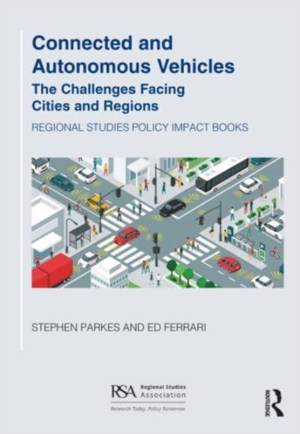
- Afhalen na 1 uur in een winkel met voorraad
- Gratis thuislevering in België vanaf € 30
- Ruim aanbod met 7 miljoen producten
- Afhalen na 1 uur in een winkel met voorraad
- Gratis thuislevering in België vanaf € 30
- Ruim aanbod met 7 miljoen producten
Connected and Autonomous Vehicles
The Challenges Facing Cities and Regions
Stephen Parkes, Ed FerrariOmschrijving
The past decade has seen substantial progress towards the development of Connected and Autonomous Vehicles (CAVs). Accompanying the technological developments, there has been much dialogue around the potential for CAVs to help solve a range of economic, social, and environmental issues. Some of CAVs purported benefits include, for example, greater efficiency in the use of existing transport infrastructure, improved safety through removing human error, and widening access to automobility. However, there are also many potential downsides, and whether and how CAVs will deliver on their promise remains shrouded in much uncertainty and not a small degree of scepticism.
This book views developments around CAVs through the lens of local policymakers and the towns and cities they represent. We argue it is now time to expand the dialogue to include consideration for towns and cities beyond those early adopters to understand how they will fare, and how CAVs might interact with other important policy agendas facing them.
We discuss the different challenges that CAVs will pose for the urban built environment and the required forms of preparedness for these. We also explore how CAVs will interact with other uses and users of cities, including potentially competing efforts to enhance urban wellbeing and liveability. Finally, we consider how responses to CAVs are being developed and what the implications of these are.
This book will appeal to policymakers, practitioners, and academics interested in the potential impacts of CAVs and in understanding more about how they will shape and interact with cities and regions in the near future.
Specificaties
Betrokkenen
- Auteur(s):
- Uitgeverij:
Inhoud
- Aantal bladzijden:
- 100
- Taal:
- Engels
- Reeks:
Eigenschappen
- Productcode (EAN):
- 9781032392110
- Verschijningsdatum:
- 24/02/2023
- Uitvoering:
- Paperback
- Formaat:
- Trade paperback (VS)
- Afmetingen:
- 175 mm x 248 mm
- Gewicht:
- 219 g

Alleen bij Standaard Boekhandel
Beoordelingen
We publiceren alleen reviews die voldoen aan de voorwaarden voor reviews. Bekijk onze voorwaarden voor reviews.









